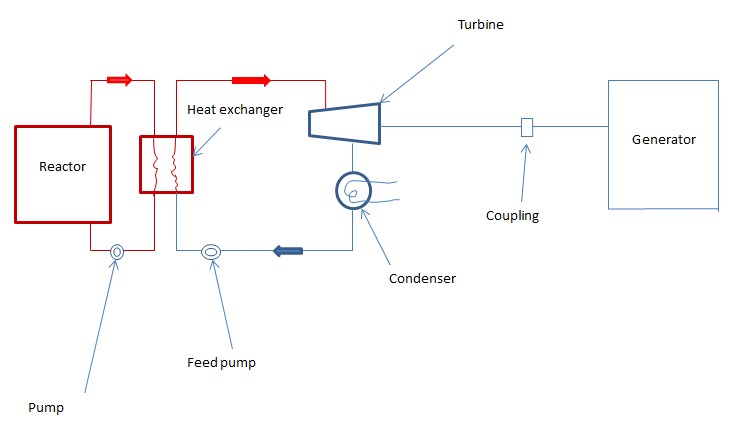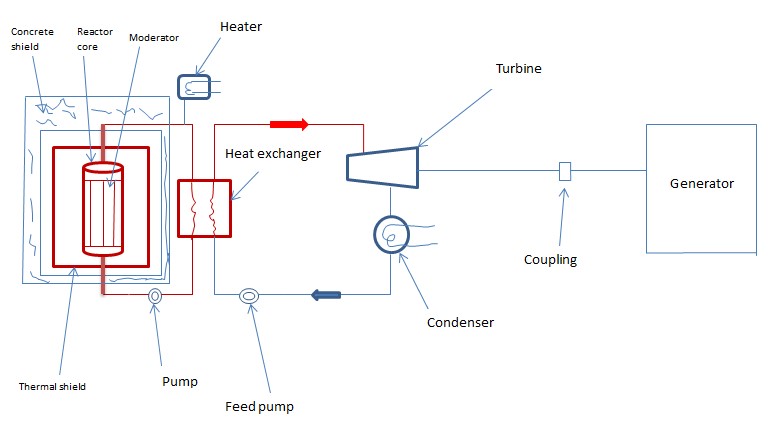How do nuclear power plants work
Explore the environmental implications of Hydrofluoroolefins (HFOs) in comparison to traditional refrigerants, highlighting their potential benefits in reducing global warming potential and ozone depletion.
A power plant where nuclear energy is converted into electrical energy is called a nuclear power plant. Accessible and low-cost power generation is essential in the modern world. For this purpose, nuclear power plants use the heat generated from the nuclear fission process of radioactive materials such as uranium-235 and thorium-232 to produce large amounts of electricity. Most importantly, it consumes very little fuel compared to other sources and generates significantly more energy. The energy obtained from the fission of just 1 kg of uranium-235 is roughly equivalent to the energy produced by burning 4,500 tons of high-quality coal or 1,700 tons of oil—about 200,000 times more energy. Nuclear power is not only readily available but can also be produced at a lower cost than other sources.
Nuclear fuel: Nuclear fuel is a fissionable isotope that undergoes chain reactions through fission in a nuclear reactor, producing a significant amount of heat. The fuel that undergoes complete fission is the most useful nuclear fuel. Naturally occurring uranium is the most widely used nuclear fuel. Natural uranium contains the following isotopes and their respective percentages:
- U-238 = 99.3%
- U-235 = 0.7%
- U-234 = very insignificant.
Among these, U-235 is the most fissile fuel that participates in chain reactions, which is why U-235 is called the primary fuel. Thorium (Th-232), plutonium (Pu-239), and uranium-233 (U-233) are artificially produced from U-238 and are known as secondary fuels. Both U-233 and Pu-239 undergo fission when struck by thermal neutrons.
So it can be seen that nuclear reactors use uranium (U235, 238 and 233), plutonium (239) and thorium (th232) as fuel.
How to work nuclear power plant

Process: Heat is produced by the nuclear fission of nuclear fuel in a nuclear reactor. The heat generated is transferred via a coolant to the heat exchanger, where water is heated to produce steam. After releasing its heat, the coolant is sent back to the reactor with the help of a coolant pump. The steam produced in the heat exchanger drives a steam turbine, which in turn powers the connected generator to produce electricity. The steam exhausted from the turbine is condensed into water by cooling water in the condenser and is then sent to the feed water heater via a condensate pump. There, it is heated by the bleed steam from the turbine, increasing the plant’s efficiency. The bleed steam itself condenses to water, which heats the feed water and is then pumped back to the heat exchanger as feed water.
Fission: Fission is the process of splitting the nucleus of a heavy atom into smaller nuclei by the impact of neutrons. This splitting of the nucleus produces a tremendous amount of energy. Fission of the nucleus occurs when a high-energy neutron, proton, or deuteron strikes a uranium nucleus. During this process, part of the mass of the fissioned nucleus is converted into energy. Fission of a uranium nucleus typically releases 1 to 3 more neutrons. High-energy neutrons are produced. These neutrons further split additional uranium nuclei, generating a large amount of thermal energy through this chain reaction. Each fission of a uranium nucleus releases approximately 200 million electron volts of energy.
How to work nuclear reactor

Pressurized Water Reactor or P.W.R: The structure of a typical pressurized water reactor is shown. It contains ordinary water in a high-pressure vessel, which has its own heater and top spray system. It consists of the reactor core, control rod, coolant pump, steam generator, feed pump, condenser, turbine, generator, etc. Common water is used as a moderator and coolant, while enriched uranium oxide is used as fuel.
Procedure: This type of reactor, or pressurized water reactor, usually consists of a high-pressure water vessel, with a heater below and a spray system above. Advanced uranium oxide (UO₂) is used as fuel. It contains normal water at a high pressure of about 2000 psi or 100 to 150 atm, which is heated to a temperature of about 290°C. This water is also used as a moderator. Hot water from the reactor flows to the steam generator, where the feed water absorbs this heat and produces steam. The primary circuit consists of a steam generator. The primary coolant from the steam generator is recirculated to the reactor by coolant pumps. Pressure and temperature in the primary circuit are controlled with heaters and sprayers. The pressure of the steam generated from the steam generator is reduced. This steam drives the turbine to turn the generator and produce electricity. Here, the steam pressure is about 75 to 80 kg/cm², and the temperature is 290 to 320°C.
Advantages and disadvantages of nuclear power plant
Advantage:
- The fuel required is very low, reducing transportation costs.
- It occupies less space compared to other power plants.
- It is highly efficient for generating large amounts of electricity.
- It can be conveniently located near any load center.
- Initial distribution costs are relatively low.
- Due to the abundance of nuclear fuel, long-term electricity generation can be ensured.
- It allows for reliable and secure operation.
Disadvantage:
- Nuclear fuel is expensive, and the extraction process is complex.
- Capital costs are higher compared to other power plants.
- The installation and operation of the plant require specialized expertise.
- The by-products of fission are radioactive and hazardous.
- Maintenance costs are high, requiring skilled craftsmen and experienced engineers.
- It is not always suitable for handling variable loads.
- The radioactive nature of the waste produced presents significant storage challenges.

